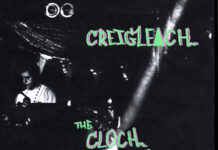
by Alan Jacques

Irish Water has recommended the use of orthophosphate dosing, which they claim has proved effective internationally in addressing the health risks posed by lead in drinking water. By depositing a coating on the pipe, the chemical is said to reduce the levels of lead being dissolved into the water.
However, the anti-water campaign group is not happy that people have not been consulted about the effects of introducing orthophosphate, a food-grade chemical substance, to the water supply in the coming weeks as part of a pilot project.
In a statement, Right2Water Mid West commented: “We are aware of the environmental issues caused if this chemical enters our lakes and rivers with algae and possible dangers to wildlife. Other possible effects are irritation of the skin, digestive and respiratory tracts as well as the fact that chronic exposure could cause calcium phosphate in the kidneys.”
Right2Water is calling on local authorities in Limerick and Clare to demand a public consultation with Irish Water on this issue.
Sinn Féin’s Cmhlr Séighin Ó Ceallaigh also feels that Irish Water is “simply replacing one chemical with another”.
A briefing was held in June for Limerick councillors and further briefings for all public representatives will be held in both Clare and Limerick on the proposed pilot scheme over the coming weeks. Notification of the proposal to run the pilot scheme in Limerick was also included in correspondence sent to 26,000 householders recently notifying them of possible lead connections.
“With approval of the EPA and the HSE, Irish Water is proposing the use of orthophosphate dosing to lower lead levels by up to 90 per cent. This is a standard, proven treatment internationally which has been in use for at least 15 years,” an Irish Water spokeswoman told the Limerick Post.
“The proposed dose to be added to the water is minimal and phosphate is already consumed daily through natural foods and food additives. To put it into context, soft drinks have 100 times the level of the proposed phosphate while beer had 150 times.”










